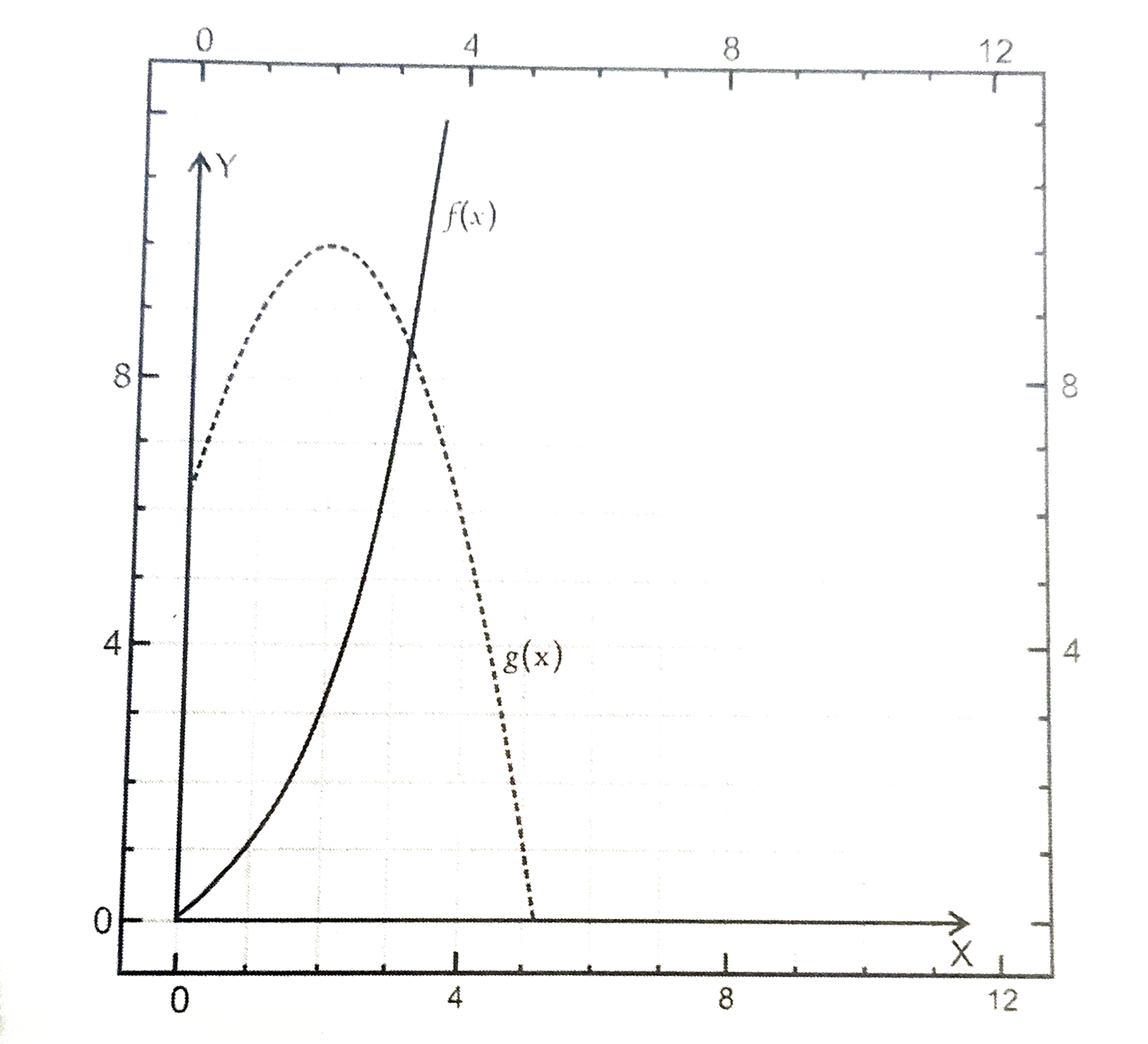f(x)=-1+kx+k neither touches nor intecepts the curve f(x)= Iog x, then minimum value of k ∈
(1e,1√e)
(e,e2)
(1√e,e)
None of these
The correct Answer is:A
To solve the problem, we need to find the minimum value of k such that the line f(x)=−1+kx+k neither touches nor intersects the curve f(x)=logx.
Step 1: Set up the equations
The line can be rewritten as:
f(x)=kx+(k−1)
The curve is given by:
g(x)=logx
Step 2: Find the condition for tangency
For the line to neither touch nor intersect the curve, the line must always be above the curve. This means that the equation:
kx+(k−1)>logx
must hold for all x>0.
Step 3: Find the derivative of the curve
The derivative of g(x)=logx is:
g′(x)=1x
At any point x0, the slope of the tangent to the curve is 1x0.
Step 4: Set the slope of the line
The slope of the line f(x) is k. For the line to not touch the curve, we need:
k<1x0
This implies:
x0<1k
Step 5: Substitute x0 into the inequality
We also need to ensure that:
kx0+(k−1)>logx0
Substituting k=1x0:
1x0x0+(1x0−1)>logx0
This simplifies to:
1+1x0−1>logx0
Thus:
1x0>logx0
Step 6: Analyze the inequality
The inequality 1x0>logx0 holds true for x0>e. Therefore, we can say:
x0>e⟹k<1e
Step 7: Find the minimum value of k
From our analysis, we conclude that k must be greater than 1 for the line to neither touch nor intersect the curve. The minimum value of k that satisfies this condition is:
k≥1
Step 8: Conclusion
Thus, the minimum value of k such that the line f(x) neither touches nor intersects the curve g(x) is:
Minimum value of k=1
The line can be rewritten as:
f(x)=kx+(k−1)
The curve is given by:
g(x)=logx
For the line to neither touch nor intersect the curve, the line must always be above the curve. This means that the equation:
kx+(k−1)>logx
must hold for all x>0.
The derivative of g(x)=logx is:
g′(x)=1x
At any point x0, the slope of the tangent to the curve is 1x0.
The slope of the line f(x) is k. For the line to not touch the curve, we need:
k<1x0
This implies:
x0<1k
We also need to ensure that:
kx0+(k−1)>logx0
Substituting k=1x0:
1x0x0+(1x0−1)>logx0
This simplifies to:
1+1x0−1>logx0
Thus:
1x0>logx0
The inequality 1x0>logx0 holds true for x0>e. Therefore, we can say:
x0>e⟹k<1e
From our analysis, we conclude that k must be greater than 1 for the line to neither touch nor intersect the curve. The minimum value of k that satisfies this condition is:
k≥1
Thus, the minimum value of k such that the line f(x) neither touches nor intersects the curve g(x) is:
Minimum value of k=1
Topper's Solved these Questions
- MONOTONICITY MAXIMA AND MINIMABOOK - ARIHANT MATHS ENGLISHCHAPTER - MONOTONICITY MAXIMA AND MINIMAEXERCISE - Exercise (More Than One Correct Option Type Questions)
16 Videos
- MONOTONICITY MAXIMA AND MINIMABOOK - ARIHANT MATHS ENGLISHCHAPTER - MONOTONICITY MAXIMA AND MINIMAEXERCISE - Exercise (Statement I And Ii Type Questions)
8 Videos
- MONOTONICITY MAXIMA AND MINIMABOOK - ARIHANT MATHS ENGLISHCHAPTER - MONOTONICITY MAXIMA AND MINIMAEXERCISE - Exercise For Session 5
8 Videos
- MATRICES BOOK - ARIHANT MATHS ENGLISHCHAPTER - MATRICES EXERCISE - Exercise (Questions Asked In Previous 13 Years Exam)
49 Videos
- PAIR OF STRAIGHT LINES BOOK - ARIHANT MATHS ENGLISHCHAPTER - PAIR OF STRAIGHT LINES EXERCISE - Exercise (Questions Asked In Previous 13 Years Exam)
2 Videos
Similar Questions
Knowledge Check
If the line x + y = 1 touches the parabola y2=kx , then the value of k is
AA. 4BB. −4CC. 2DD.−2If f(x)=x3−kx2+2x and f(-x)= -f(x), the value of k is_
A-2B0C1D2
Prove that the function f defined by f(x)=x^2−x+1 is neither increasing nor decreasing in (−1,1). Hence find the intervals in which f(x) is strictly increasing and strictly decreasing.
View SolutionSuppose f is continuous on [a,b] & f(a)=f(b)=0 & ∫baf2(x)dx=1 then the minimum value of ∫0a(f′(x))2dx∫bax2f2(x)dx is k, then 8k is
View SolutionIf f(x)=1+2x2+4x4+6x6+....+100x100 is a polynomial in real variable x, then f(x) has (a) neither a maximum nor a minimum (b) only one maximum (c) only one minimum (d) one maximum and one minimum
View SolutionIf x+1 is a factor of the polynomial 2x2+kx, then the value of k is
View SolutionIf the sum of the zeros of the quadratic polynomial f(x)=kx2−3x+5 is 1, write the value of k .
View Solution
The graph of f(x) and g(x) are shown below. If 3f(g(k)+1)+g(f(m)), where k and m are positive integers from 1 to 5, what is the maximum value of (K+m)?
View Solution